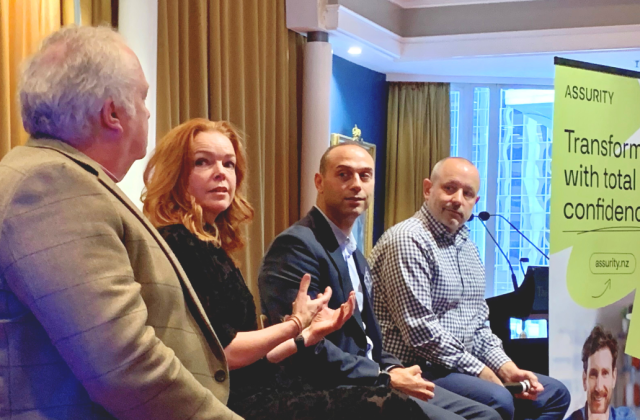Date: 26 November 2016
The Assurity coaching team have helped clients achieve significant improvements in quality by adopting SBE.
As a collaborative approach to seeking requirements, Nigel Charman describes how development teams can reach a better understanding of their business needs by discussing general acceptance criteria in addition to specific examples.
To build quality into a solution, you need to understand the requirements at a detailed level and then prove they have been met. In many software development projects, however, the requirements aren’t well understood by the development team because of the system’s complexity, for example, or poor communication within the team. But all too often, misunderstandings only surface after the software is built, when the financial damage has already been done.
The obvious solutions have been to gather all the requirements and get the design done first, under the assumption that if we know everything upfront and in its entirety and correctly, then the requirements will hold over time. Experience tells us that few pieces of work have these attributes.
Specification by Example seeks to address these issues, one of its key practices being specifying collaboratively. Immediately prior to the development of a user story, the team discusses the story and elaborates a set of concrete examples that are later used as acceptance tests. This discussion typically involves the whole team, including the product owner, business people, testers and developers. By harnessing the skills and experience of the whole team, we discover missing requirements and examples. The business plays a vital role in explaining the context and can immediately elaborate and save time through these discussions. The team gets clarity, resolves ambiguities, reduces misunderstandings, and gains a deep, shared understanding of the business need. A key differentiation for this approach is that it drives out these inconsistencies early in the process, immediately prior to development.
The BBD approach – acceptance tests as criteria
Behaviour Driven Development (BDD) is one technique from which Specification by Example emerged. The BDD approach uses a two-layer structure of stories and examples.

The scenario title states that we can search by topic but doesn’t define the general criteria. Questioning what these criteria are leads us to discover other requirements and examples.
When specifying collaboratively, we would expect a team discussion such as:
- Agile Lead: So what are the acceptance criteria for this story?
- Product Owner: The criteria is you can search by topic, for example a search for “biology” finds all courses with a topic of “biology”.
- Developer: Does the search text have to match the topic exactly?
- Product Owner: How do you mean?
- Developer: Would a search for “biology” only match “biology” or would it also match “microbiology” topics?
- Product Owner: Yes, it would also match “microbiology”. As long as the search text is part of the topic it should match it.
- Tester: So “bio” would match “biochemistry”, “biology” and “microbiology”?
- Product Owner: Yes.
The team adds:
- An acceptance criteria – ‘courses are matched if they have a topic containing the search text’.
- An example – ‘search for “biology” matches a topic of “microbiology”’.
The discussion continues:
- Tester: If I search for “b” it will match courses for all topics containing the letter “b”. That would return hundreds of courses.
- Product Owner: Hmm, that sounds bad. Any suggestions?
- Tester: Well, we could enforce a minimum text length of 3 characters.
- Product Owner: Great, let’s go with that.
The team adds:
- An acceptance criteria – ‘search text must be at least 3 characters’.
- 2 examples (at least) – ‘search text is 2 characters’, ‘search text is 3 characters’.
This dialogue illustrates how examples are elaborated from acceptance criteria. The examples stimulate ‘what-if’ discussions which generate more examples from which generalisation leads to new or refined acceptance criteria (and sometimes to new stories).

Conclusion
In summary, seeking progressive refinement from stories through acceptance criteria to examples helps us understand the requirements better. Combining generalisation and specialisation approaches reveals both missing requirements and examples. And most importantly, this is all done before a line of code has been written.
This results in a solution that better meets business needs, first time.
In Part Two, we will look at how this approach improves the living documentation, enhancing the understanding of your specifications and making your system more maintainable.
Thanks to Assurity’s Todd Brackley, Gillian Clark and Gareth Evans for their input into this article.














